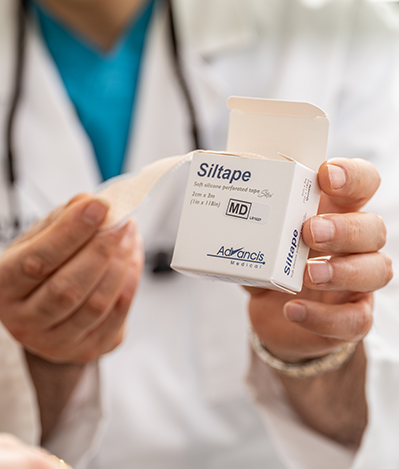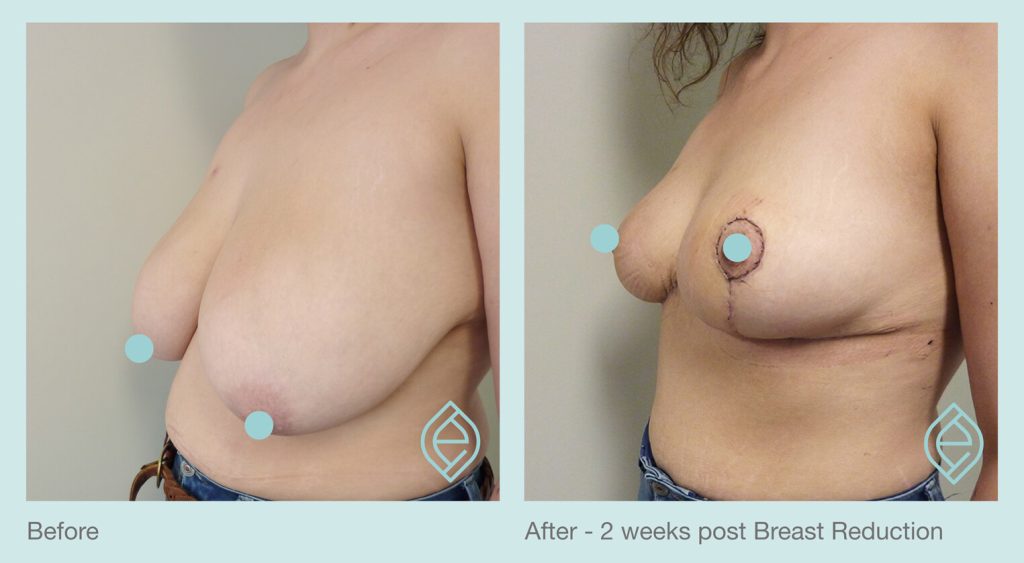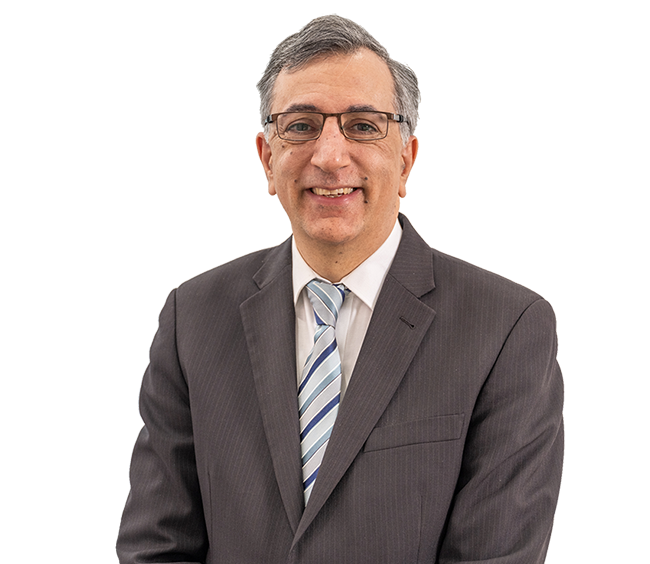Procedure Spotlight
- Performed to lift and reshape the breasts
- Excess skin is removed and surrounding tissue is reshaped
- Nipples that have dropped can be elevated to sit in the centre of the breast
- Breast lift can creates firmer, better shaped and more youthful looking breasts
A breast lift is not just for women with large breasts, it can also benefit women with smaller breasts that have breast ptosis (sag or drop of breasts). Breast lift surgery can restore breasts to a more natural, youthful and firmer appearance.
The aim of a true breast lift is to reshape and reposition the breast tissue. To do so a small amount of breast tissue must be removed to be able to reshape the breast. In a very small number of women just the areola needs to be repositioned (lifted) and little to no breast tissue is removed. But in most cases the whole breast needs to be reshaped and lifted.
If you are wanting larger or smaller breasts, then a breast lift can be combined with either a breast reduction or a breast augmentation to enhance the size and shape of the breasts.

Technique
Dr Safvat uses the more modern medial pedicle technique, which is sometimes called “the short scar technique”, for his breast lift procedures. The scar is usually placed around the areola and vertically under it. For those that have severe ptosis and stretched skin, an additional incision may be needed in the breast crease to give a better outcome. Dr Safvat will discuss the best option for you during consultation.
Once the incisions have been made, the breast tissue is lifted and reshaped to produce a more desirable appearance. The nipple and areola will also be repositioned. If either or both of the areolas are enlarged, excess skin is removed to reduce them.
Before the incisions are closed, any remaining skin is tightened. Sutures are placed in layers within the breast tissue, ensuring the breasts have enough support during and after your recovery. Surgical tape may also be applied to the incisions for an extra layer of protection.
You will more than likely spend a night in hospital but this will be discussed during your consultation. If drains are placed underneath the skin, they are removed after 2 – 3 days.

The procedure is done under a general anaesthetic in an accredited hospital. Dr Safvat only works with highly trained anaesthetists who are accredited with the Australian and New Zealand College of Anaesthetists.
Procedure Snapshot
| Anaesthetic Type: | General Anaesthetic |
| Length of Surgery: | 4 hours |
| Stay in Hospital: | 1-2 nights |
| Downtime: | 1-2 weeks depending on type of work |
Recovery
Upon being discharged, the patient is required to wear a surgical garment (bras) for six weeks and needs to have 1-2 weeks off work to rest at home. Walking is actively encouraged postoperatively but exertion and heavy lifting are not allowed for around 4-6 weeks.
Initially after the surgery, the breasts will be swollen and the skin incision will be raised, red and lumpy. This will settle over the next few months and Dr Safvat will guide you through scar management after your operation. In general, it can take some months before the breasts settle into their final shape. The appearance of incision lines will fade over time to fine white lines and are less noticeable.
It’s important to wear your compression garment for at least 6 weeks. This will reduce swelling and support your breast, resulting in a speedier healing process. Any pain and discomfort that is experienced during this time can be managed easily with medication. During the first 2 weeks, it helps to sleep on your back. Surrounding yourself with pillows can help prevent you from rolling over during the night.
While it’s important to take the time to heal and relax, taking short walks a few days after your surgery can accelerate the healing process and reduce the risk of complications.

Any strenuous exercise and heavy lifting will need to be avoided for 4-6 weeks. You should only resume your usual exercise routine once Dr Safvat gives you clearance and if you feel ready to do so.
Preparation
Smoking and being overweight have been shown to cause more complications after surgery. Dr Safvat will insist that you stop smoking 3 – 4 weeks before your surgery and that your weight is stable. As a general rule, if your weight is stable, the result of the breast lift surgery is much better. You will also need a mammogram done within 12 months of your operation.
If you are planning to start or grow your family, it’s best to do this before you consider surgery. This is because your breast size and shape can change after a pregnancy and this can affect the final result.
Scars
There is no way to prevent scars completely after surgery and everyone can scar differently. However, the techniques Dr Safvat uses to suture his wounds are designed to minimise scarring. What’s more, any scarring will fade over time, especially if they are cared for correctly. In a breast lift procedure, the scars are usually around the areola and vertically down towards the breast crease which are easily hidden away.
Patients who have followed Dr Safvat’s protocol for scar management diligently have been very pleased with their progress in reducing and fading of scars. Dr Safvat will also include LED Light Therapy sessions (available in Miranda only) which will assist with wound healing, scarring and recovery.
Dr Safvat will provide you with his specific protocol for scar management that will help you protect and care for your incision in a way that will minimise scarring.

Complications
While all care and diligence is taken by Dr Safvat to minimise or avoid complications, any surgical procedure can be associated with some general complications and/or specific complications related to the surgery you are having. Choosing a Specialist Plastic Surgeon such as Dr Safvat and having your procedure done in an accredited hospital minimises risks, as does using accredited Anaesthesists.
Some general surgical potential complications are:
• Infection that may require antibiotics (Dr Safvat prescribes all patients antibiotics after surgery to minimise this risk).
• Fluid build-up under the skin (seroma).
• Allergic reaction to dressings and other items used during the procedure.
• The formation of blood collection (haematoma) which could require additional surgery.
• Scars heal differently in different people. Some people are genetically prone to develop keloid scars. Hypertrophic scars develop when there is a complication in the healing process. Whilst not ideal, there is no threat to your health if you develop these.
Some potential complications related to breast lift surgery specifically are:
• Loss of nipple and areola sensation or alteration of sensation is common and usually temporary. However, in some cases, it may persist indefinitely.
• Asymmetry
• Inability to breast feed
• Loss of nipple and areola tissue is rare but can happen if the nipple/areola loses its blood supply.
Cost
Breast Lift surgery has a Medicare item number in some cases, but not all. There are strict Medicare criteria that must be met (2/3 of the breast tissue including the areola must be below the breast crease). Otherwise, it is considered a cosmetic procedure meaning no rebates are available.
If it is classified as a medically required procedure (determined during consultation with Dr Safvat), patients should get a rebate from Medicare and their health fund (where applicable) and the hospital costs are usually covered by private health funds depending on the patient’s level and type of coverage.
Detailed information regarding costs will be provided to you after your initial consultation.
Frequently asked questions
IS BREAST LIFT SURGERY THE RIGHT CHOICE FOR ME?
A breast lift is a personalised procedure and may not be the right choice for everyone. Scheduling a consultation with Dr Safvat is the best way to get a clear idea about whether it is the right procedure for you. The condition of your breasts and your medical history will play a role in determining this.
The ideal breast lift patient should be in good physical health and have realistic expectations about the outcome. The breasts should also be fully developed and have lost their shape and firmness. Another reason why you might be an ideal candidate is if your nipples fall below the breast crease and point downwards.
Before you consider a breast lift, keep in mind whether it is the shape or the size of your breast that is of concern to you? If you want fuller and bigger breasts, augmentation (breast implants) is a better option. If you want smaller breasts, a breast reduction is probably better suited to your needs. Dr Safvat will discuss all options with you during your consultation. It should also be noted that results don’t tend to last as long if you’re planning to expand your family.
WHAT CAN I EXPECT OVER THE LONG TERM AFTER BREAST LIFT SURGERY?
Whilst the results of a breast lift (mastopexy) will last a long time, they are not permanent. Factors such as ageing, weight fluctuations and pregnancy can have an effect on the permanency of your results. Maintaining a healthy weight is one way to enjoy the results of your surgery for longer.
ARE THERE ANY ALTERNATIVES TO BREAST LIFT SURGERY?
This depends on what outcome you are wanting. There are alternative surgeries that reshape the breast such as breast reduction (to reduce size) and breast augmentation (to increase size) that may be a better option for you. You may also benefit more from fat grafting to the upper part of the breast rather than a breast lift to give you a better shape. Dr Safvat will discuss your goals during consultation and offer advice on the best surgery for your preferred outcome.
HOW MUCH DOES A BREAST LIFT COST?
There are a number of aspects that contribute to the final cost of a breast lift, including anaesthetist, surgeon and hospital fees. Some patients also choose to combine their Breast lift with augmentation, which can also change the final cost. Cost will be affected depending on whether the procedure is classified as cosmetic or medically required. Once you have your consultation with Dr Safvat, we will be able to give you a thorough estimate of fees.
WHEN WILL I SEE THE FINAL RESULTS OF MY BREAST LIFT?
Directly after your surgery, you will see a noticeable difference. However, the shape of your breasts will continue to change and settle over the course of the next 3 months. Your breasts may appear smaller after a lift, even if you didn’t combine your procedure with a reduction. This is mainly because your breasts are now firmer and have a better shape. If you combined your procedure with augmentation, your breasts will more than likely be larger and healing could take a bit longer, depending on where the implants were placed.
HOW MUCH SCARRING IS PRESENT AFTER A LIFT?
Directly after your surgery, the incision sites will be red and lumpy. Scarring is an inevitable part of a breast lift and will be permanent. However, if you follow Dr Safvat’s specific scar management protocol, they will become softer, thinner and lighter in colour over time and should hardly be noticeable.
WILL A BREAST LIFT AFFECT MY ABILITY TO BREASTFEED?
It is possible for any type of breast surgery to affect your ability to breastfeed but there’s no way to know this for sure. In most cases, breastfeeding will still be possible. Every step is taken to keep the milk ducts and nipple sensation intact during surgery. Directly after surgery, some numbness is going to be present but feeling will gradually return over the course of the next month or two. If you are particularly concerned about being able to breastfeed, it’s best to schedule your surgery after you’ve completed your family.
Where does Dr Safvat perform this procedure?
Dr Safvat does the Breast Reduction procedure in the Sydney region (Sutherland Shire and Inner West) as well as in the Southern Highlands, NSW. He only operates in fully accredited Private Hospitals, these being Kareena Private Hospital (Caringbah), Strathfield Private Hospital and Southern Highlands Private Hospital (Bowral).
Before and Afters



You must be over 18 years to view Dr Safvat’s before and after image galleries
Dr Safvat is a fully qualified Specialist Plastic Surgeon. Every patient is unique and results may vary. Any surgical procedure carries risks which need to be discussed with your doctor to ensure you are fully informed and realistic outcomes have been explained. Before proceeding, you should seek a second opinion from an appropriately qualified health practitioner.
These photos are of actual patients of Dr Safvat. Each has given consent for the photos to be used by Dr Safvat only.
DR ANDRE SAFVAT (MED1155201)
Registered Medical Practitioner, Specialist Plastic Surgeon (specialist registration in Surgery – Plastic surgery).
Dr André Safvat – Specialist Plastic Surgeon
Renowned for his dedication to his patients, his attention to detail and impeccable outcomes, Dr Safvat’s unparalleled expertise is reflected in the quality, professionalism and dedication of every member of our team.


